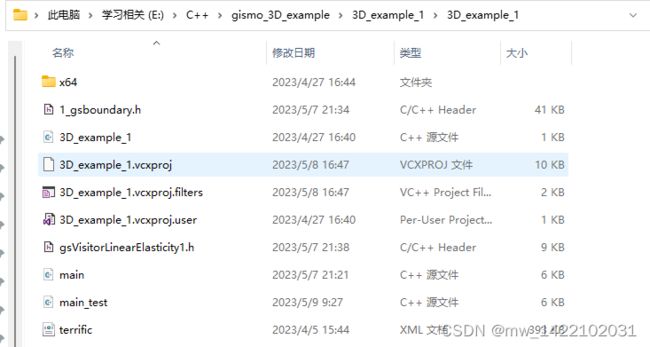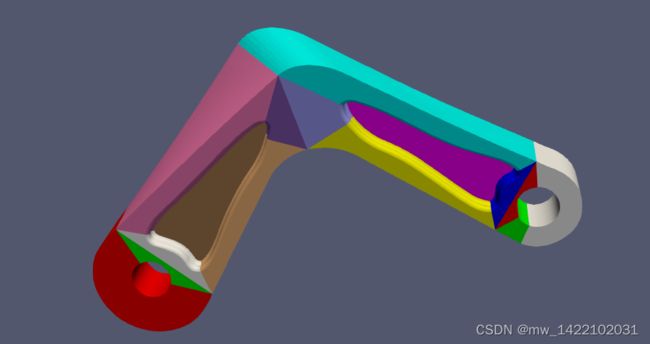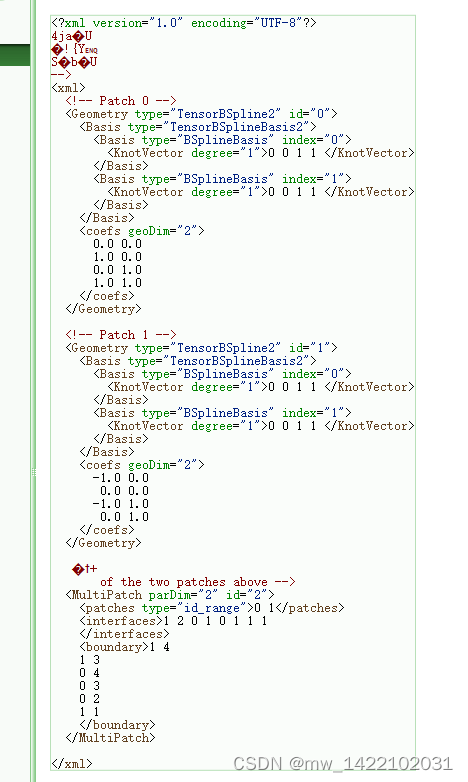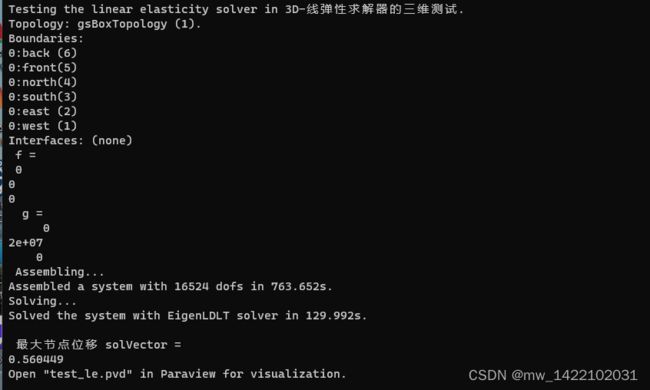gismo-3维IGA
文章目录
- 前言
- 一、简单示例
- 二、gismo-3维IGA
-
- 3维程序中的几何模型
- 三、xml文件的理解
-
- 1、xml文件示例
- 2、gismo中二维示例文件-一个曲面(简单)
- 四、三维程序中xml文件的理解
-
- 三维几何模型
- 边界信息
- 五、三维程序运行
-
- 细化四次
- 细化5次
- 总结 #pic_center
前言
只是为方便学习,不做其他用途!
一、简单示例
参考网页 Tutorial 02: Geometry
#include 二、gismo-3维IGA
运行代码需要配置好gismo环境
还需要将 terrific.xml 放在项目文件下,和cpp文件放在同一文件路径下
/// This is an example of using the linear elasticity solver on a 3D multi-patch geometry.
/// The problems is part of the EU project "Terrific".
///
/// Authors: O. Weeger (2012-1015, TU Kaiserslautern),
/// A.Shamanskiy (2016 - ...., TU Kaiserslautern)
#include 3维程序中的几何模型
三、xml文件的理解
1、xml文件示例
网址https://gismo.github.io/Tutorial02.html
2、gismo中二维示例文件-一个曲面(简单)
可以参考之前的博客gismo中用等几何解决线弹性问题的程序示例来理解xml文件
注: 一个平面没有 interfaces这一项
对 interfaces这一项 目前还没有理解
四、三维程序中xml文件的理解
三维几何模型
边界信息
给的示例文件中有15个体组装在一起
五、三维程序运行
细化四次
运行时间:14分钟
细化5次
运行时间:4.58h
组总刚:1.6h
解方程组:2.98h
总结 #pic_center
空格 空格
:
| 二维数 |
| 1 |
| 1 |
| 1 |














